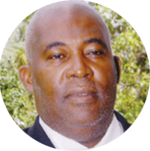
CREOLE HERITAGE MONTH held in St. Lucia in October ’22 was indeed a cultural explosion. The cultural performances and activities went far beyond my expectations.
Our cultural heritage includes tangible as well as intangible culture. Our artefacts, folklore, books, particularly those written in creole; our cultural heritage sites like the Pigeon Island National Landmark and the Pitons, have global significance for us.
But the Folk Research Centre and the Cultural Director must be commended for its many frontline activities initiated or implemented during the Cultural Heritage Month.
I was able to view from my home the activity which was held at Government House. That was a classic! The programme included aspects of the way of life of our people which was left by our forefathers or generations that went before us.
Indeed, we came face to face with some of the things that help shape the aspirations, values and beliefs of our national identity. The things that make us true St. Lucian.
But Jounen Kweyol was explosive. The activities were concentrated in two main areas in the city, namely the William Peter Boulevard and the Derek Walcott Square, although there were some activities on the Castries market steps. The children were in large numbers in the William Peter Boulevard. They could be seen playing Creole games such as ‘morel’, ‘tikitok’.
‘Wool la whoop” and the many games which I played in my childhood days in George Charles Boulevard, Marchand.
On the Derek Walcott Square, many of our citizens in the arts had an opportunity to expose their talent. There was a continuous flow of Kweyol music, stilt walkers, masquerades and activities that were wholly St. Lucian.
While the massive crowds were enjoying the music, food and games, the Castries Market was holding its own. The Prime Minister of St. Lucia, Hon. Philip J. Pierre could be seen dancing with what the British would term ‘A commoner’. What I mean is that he took the opportunity to dance with an ordinary, down to earth lady; a native of St. Lucia. And, indeed, he had the Polka Steps.
It must be noted that St. Lucians came out in large numbers. I don’t know if it was because they missed the outdoor activity for two years or that the Ministry of Culture went all out to plan and execute Jounen Kweyol 2022. To be fair, I think it is both.
By now, the persons who were suggesting that Castries didn’t have anything to offer for Jounen Kweyol, are now very quiet.
What is left to be done is to have an evaluation meeting to look at the strengths and weaknesses of this year’s activities with a view to improving the product for 2023 and beyond. However, from my assessment of the day, I would say that Jounen Kweyol 2022 was the best so far.
I could recall having gone to Choiseul several years ago for Jounen Kweyol. There were so many vehicles that I was never able to get to the centre of the action. Not so in Castries! And I must take the opportunity to congratulate mayor Lendor-Gabriel and her team for a well-executed programme of activities.
Indeed, the Minister for Housing, Hon. Richard Frederick collaborated very well with the Minister for Culture to bring about an excellent presentation.
What has struck me very forcefully, is the fact that scores of children could be seen participating and enjoying themselves in the Jounen Kweyol activities. And that is import as a people. That after we have gone, our children and grandchildren would be there to carry on with our creole heritage, our creole culture which is rich and diverse.
But we cannot keep the culture to ourselves. We must share it with others. Hon. Sir Derek Walcott did that very well in his poetry. He tried, with great effort, to encourage visitors, tourists to go beyond the resorts and to explore the exciting scenery and cuisine of the Helen of the West, this beautiful isle.
I must admit that schools have a lot to do with the promotion of Culture. Culture is a major component of our Social Sciences programme in schools in St. Lucia. But are we doing enough to promote or enculturate our students.
Our government is thinking seriously of introducing Patois as a medium of instruction. In a previous article I showed that the creole language could enable students to learn English and other languages. Patois should no longer be seen as a “Country boy” language. In fact, it is the Mother Tongue or first language of St. Lucia.
But we are getting there gradually!
As a classroom teacher I often spoke in creole to my students when I am very sure that the language will enable them to gain greater insights in the lesson that was being taught. And I often had a huge success.
Student performance can improve tremendously though the medium of creole or Patois in schools. I am not indicating that English must side-lined. In fact, a teacher won’t be able to do that successfully. Both languages could be used at the discretion of the teacher or with proper timetabling.
It is my desire to see the Creole language become a formal language and an official medium of instruction in schools before I go back to my creator.
Indeed, we won’t go wrong when this happens!












